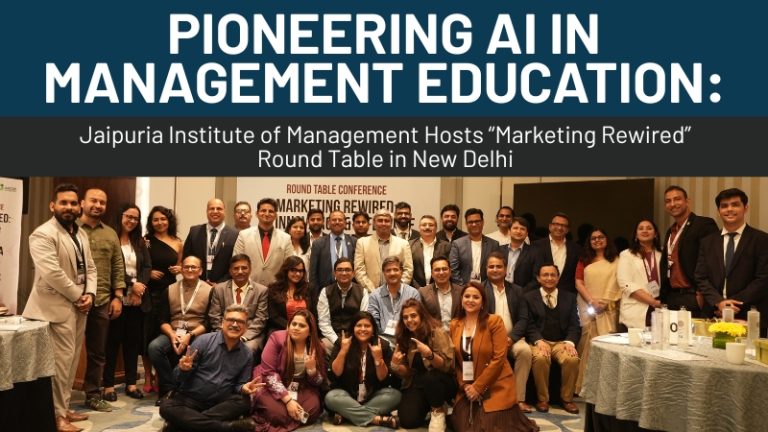The U.S. is one of India’s top export destinations. Think textiles, seafood, leather goods, even pharma. With tariffs at 50%, Indian goods become too expensive for U.S. buyers compared to products from countries like Vietnam or Bangladesh.
How Trump’s Tariffs on India Affect Business — A PGDM Perspective

Trump’s Tariff Trouble: What It Means for India and Why PGDM Students Should Care
Imagine this: you’re running a business, exporting your products to your biggest customer abroad. Suddenly, that customer doubles the tax on your goods overnight. Prices shoot up, demand falls, and your profits sink. That’s exactly the situation many Indian exporters are facing right now.
On 6th August 2025, U.S. President Donald Trump slapped an extra 25% tariff on Indian imports, taking the total duty to a massive 50%.
His reason? India’s continued purchase of Russian oil. The U.S. sees this as supporting Moscow in its war efforts. But for India, the move feels like an economic punch in the gut.
Why This Is a Big Deal for India
The U.S. is one of India’s top export destinations. Think textiles, seafood, leather goods, even pharma. With tariffs at 50%, Indian goods become too expensive for U.S. buyers compared to products from countries like Vietnam or Bangladesh.
- India’s trade deficit has already hit an eight-month high of $27.35 billion in July 2025.
- Now, exporters are bracing for an even rougher ride.
Group Discussion Topics
Who’s Feeling the Burn?
Seafood & Shrimp Farmers
Seafood—especially shrimp—is India’s largest export item to the U.S., making up a big share of the $8–9 billion seafood trade. A 50% tariff means American buyers will have to pay much more for Indian shrimp compared to alternatives from countries like Ecuador or Vietnam. This could:
- Reduce India’s market share in the U.S.
- Force many small coastal farmers to cut production or switch to other businesses.
- Create stress in coastal states like Andhra Pradesh, Odisha, and Gujarat, where shrimp farming is a livelihood for thousands.
Textiles & Apparel
India is the second-largest textile exporter in the world, but it faces heavy competition from Bangladesh, Vietnam, and China. With U.S. tariffs shooting up, Indian garments will be:
- Costlier than Bangladeshi products, which already enjoy duty-free or lower duty access in some markets.
- Less attractive to U.S. retailers like Walmart or Target, which often buy in bulk from the cheapest sources.
- At risk of order cancellations, affecting millions employed in India’s textile hubs like Tirupur, Surat, and Ludhiana.
Leather & Handicrafts
This sector is highly labour-intensive, employing many artisans and small businesses. Margins are already thin, and a 50% tariff will:
- Push U.S. buyers to look at cheaper alternatives from Vietnam, Thailand, or Latin America.
- Hit small exporters hardest, as they can’t easily absorb losses or shift to new markets.
- Threaten traditional industries like handmade leather goods, carpets, and wooden crafts, which depend on U.S. buyers for survival.
Pharmaceuticals
Pharma is India’s crown jewel in exports—India supplies about 40% of generic drugs consumed in the U.S. While medicines may not be directly hit by the tariff hike (since healthcare is sensitive), the indirect risks are real:
- Tighter U.S. scrutiny of Indian pharma companies.
- Possible delays in regulatory approvals which can slow market entry.
- Pricing pressure — U.S. insurers and buyers may negotiate harder if India is seen as a “trade offender.”
The Ripple Effect on Business
Analysts warn that tariff hikes could put pressure on exporters’ cash flows. Businesses that rely heavily on U.S. demand may see lower revenues, which can affect jobs and growth in related industries. This situation highlights how closely international policy decisions are tied to domestic business performance.
Lessons for PGDM Students
Here’s why this episode is worth your attention as future managers and leaders:
- Global Business = Uncertainty: Policies can change overnight and reshape entire markets.
- Diversification Matters: Just like portfolios, companies shouldn’t depend too much on one market.
- Geopolitics Affects Economics: Business strategy is not only about numbers; global events matter too.
- Resilience is Key: Companies that innovate, adapt, and explore new markets will survive shocks better.
Apply Now for MBA^/PGDM
Final Takeaway
- Trump’s tariffs are not just a trade headline — they’re a real-world case study in international business. The short-term challenges are real, especially for price-sensitive industries like seafood, textiles, and handicrafts. But in the long run, this could push India to diversify its markets, strengthen domestic industries, and build resilience.
- For PGDM students, the big lesson is clear: in business, external shocks are inevitable. What matters is how leaders and organizations respond to them.













